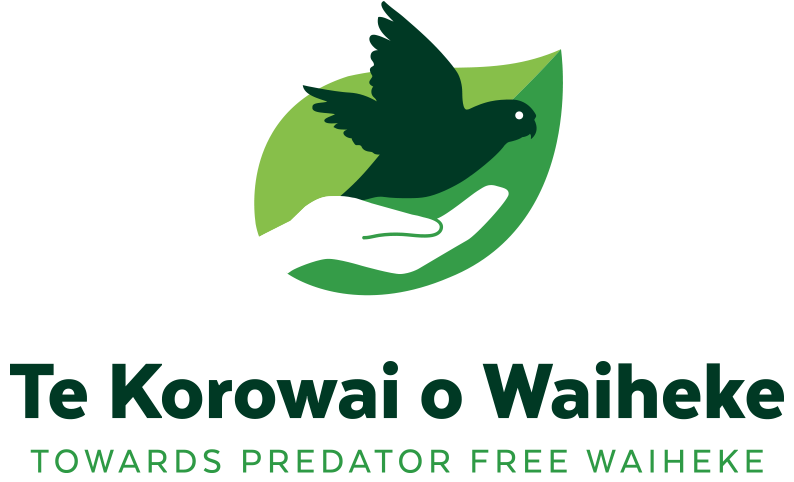Stoat eradication method
The Stoat eradication programme on Waiheke Island will predominantly use traps based on a network of one trap per six hectares across the entire island.
Traps
Tried and proven DOC series best practice traps
- DOC 200’s for stoats and weasels
- DOC 250’s for ferrets
Traps located on linear features (e.g. roads, tracks, forest, pasture, wetland edges) in the landscape, which stoats like to follow.
Traps will be activated and checked from January 2020 to December 2021.
Traps will be pre-baited two times before they are opened to encourage stoats to
interact with the traps.
Frequency of trap checks will vary based on the stoat breeding cycle, from a minimum of once a month to a maximum of once a week.
The Te Korowai o Waiheke field team will check and maintain the traps.
Traps will be baited with a visual lure e.g. an egg and a strong smelling lure e.g. fresh or salted rabbit.
Smart technology will be used on some traps. This means a phone alert will be sent to the field team alerting them when a trap has been set off.
Every trap is enclosed in a custom designed box that protects the trap and to make it harder for non-target animals to get into the trap area.
Other tools that will be used in the stoat
eradication programme include:
Detection cameras
Trail cameras will be set up across the island to determine relative abundance and location of stoats, ferrets and weasels. Data from these trail cameras will be extremely important as we get down to low numbers of mustelids and will also help us work out which habitats these animals use the most on Waiheke Island.
Predator Dogs
Predator dogs will be used to detect and define an area around a stoat, ferret or weasel that is suspected to be untrappable. They will also be used periodically to check whether there are any mustelids living in between where our traps are laid out on the network.
Vertebrate Pesticides
Vertebrate pesticides will only be used if other techniques are not successful and in limited areas to catch un-trappable stoats or potentially female stoats in dens. Landowners will be informed should they need to be used on their property.
Keeping Waiheke stoat-free
(biosecurity)
Te Korowai o Waiheke is working in partnership with Pest Free Hauraki Gulf (a joint initiative between Auckland Council and DOC to help protect conservation islands in the Hauraki Gulf - https://www.doc.govt.nz/pestfreehaurakigulf) to establish a biosecurity programme to prevent stoat reinvasion to Waiheke.
Outcome monitoring
Te Korowai o Waiheke will be monitoring native species before, during and after the eradication programme. This will include forest, wetland and costal bird surveys and gecko monitoring.
Waiheke Islanders are being encouraged to use the eBird app to record sightings of ten key indicator species that are predated on by rats and stoats; tui, piwakawaka, kereru, oi, kaka, korora, spotless crake, dotterel, ruru, and kakariki.
Kauri Dieback prevention
Waiheke Island is currently kauri dieback free. Te Korowai o Waiheke staff and contractors will be following kauri dieback hygiene procedures. Please let us know if you have kauri on your property in areas where we may want to place traps.

